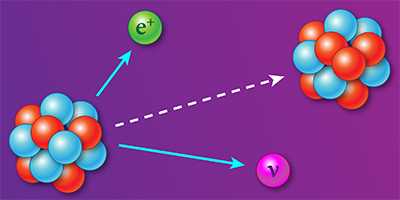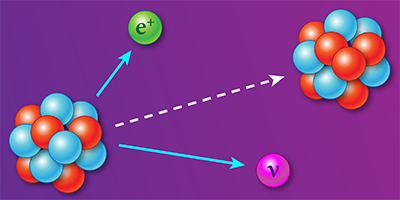Testing the Weak Interaction with Potassium
The weak interaction is responsible for radioactive decay, so the half-lives of certain isotopes can be used to test the interaction’s description in the standard model. A new way of doing this test could come from a measurement of the half-life of potassium-37 ( ), which has been determined with its greatest precision to date by researchers at the Cyclotron Institute at Texas A&M University.
’s decay to argon-37, which occurs by positron emission, is known as a “mirror” transition. The half-life of a mirror decay has a simple mathematical dependence on the standard model parameter , which gives the probability of a down quark decaying into an up quark. So far, the most precise value comes from the family of so-called superallowed pure Fermi transitions. But determining from mirror transitions, including , would provide an independent check on its value.
The authors prepared a high-purity beam of ions by colliding argon-36 with cooled hydrogen gas. After capturing the ions in a strip of Mylar tape, they determined the half-life by recording the exponential falloff in the number of emitted positrons. The reported value (1.23651 seconds) has an uncertainty of —an order of magnitude improvement compared to previous results. The newly measured half-life value won’t immediately give a more precise value, as the two quantities are related by another parameter that has to be determined with greater precision. But the value of derived from the new result is about lower than the one based on previous measures of the half-life, and agrees better with the one derived from other mirror nuclei and pure Fermi transitions.
This research is published as a Rapid Communication in Physical Review C.
–Jessica Thomas





